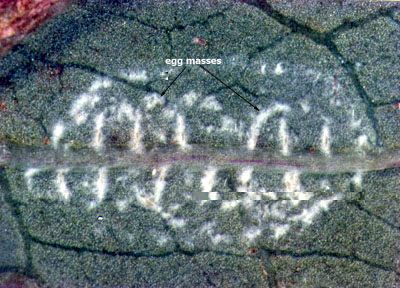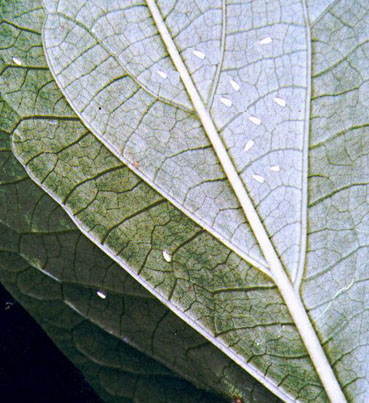|

Egg
masses of spiralling whitefly on leaf (E. Vasquez).

Sweetpotato
whitefly adults on leaf (E. Vasquez).
|
Diagnostic summary
-
whiteflies and their nymphs feeds on the undersurface of leaves by sucking the
plant sap.
-
high whitefly population may cause yellowing and necrosis of infested
leaves.
-
nymphs appear as small white scale-like
objects on the undersurface of leaves. When plant is shaken, a cloud of tiny
moth-like insects flutter out but rapidly resettle.
-
sooty mould may develop on the leaf surface due to honeydew produced by
whiteflies. The surface becomes coated with a blackish powder and
expanding
leaves may be distorted.
-
More
important as a transmitter of viruses such as sweetpotato mild mottle
virus, sweetpotato yellow dwarf disease, sweetpotato leaf curl, and
particularly sweetpotato chlorotic stunt virus, a key component of
sweetpotato virus disease.
|
Taxonomy
Economic
importance
Geographical
distribution
Damage
Morphology
Biology
and ecology
Detection
and inspection
Host
range
Management
References
View
full fact sheet |

